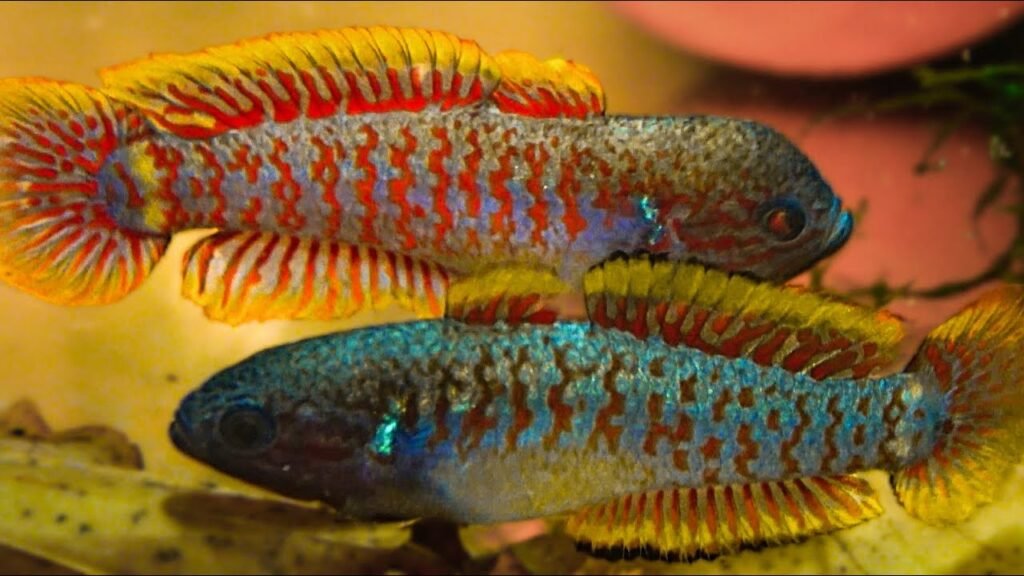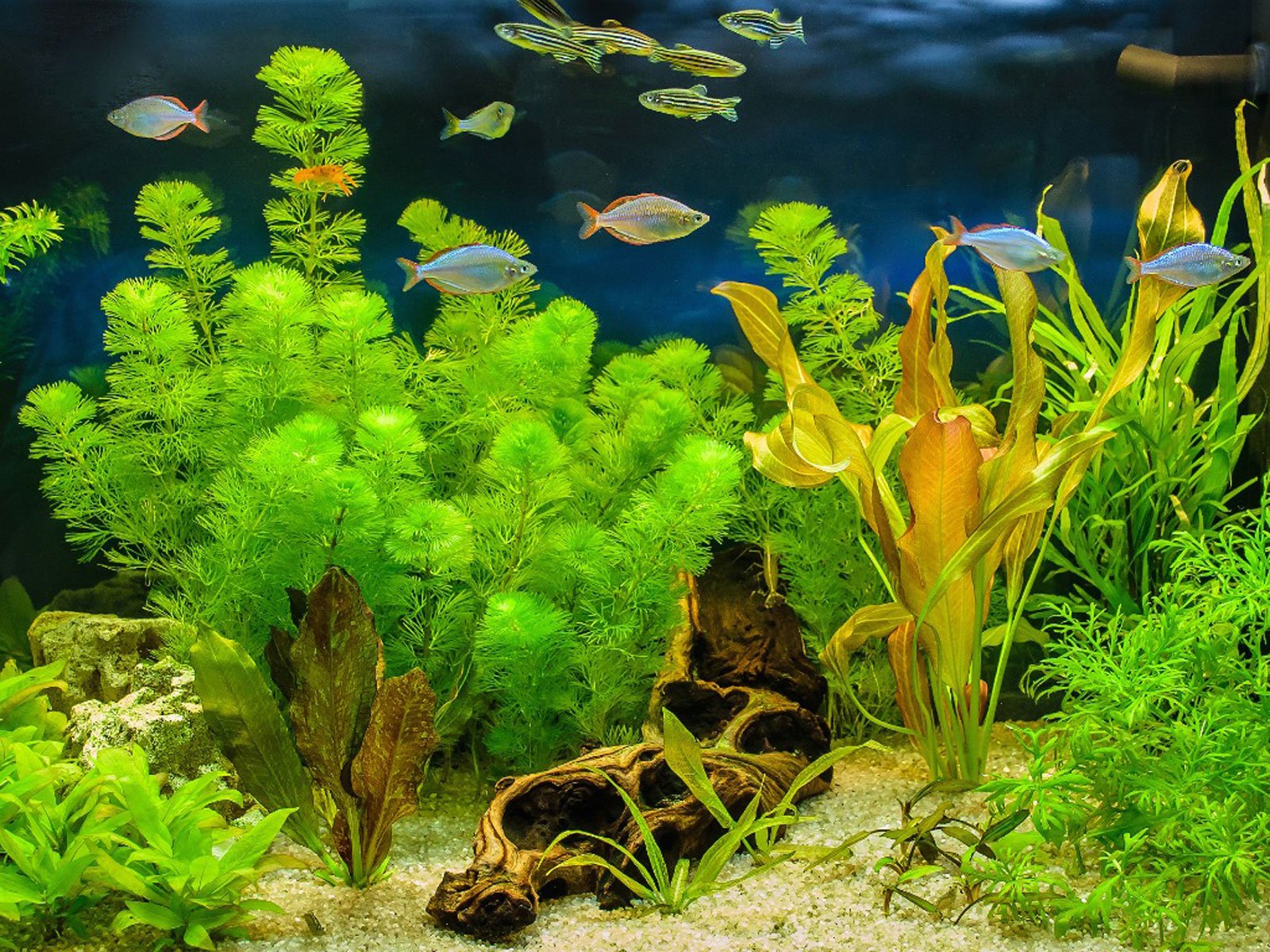Aquarium maintenance with peacock gudgeons (Teurndina ocellicauda) is relatively easy. Just like with any other fish species, you need to know what your fish loves to eat, its preferred tankmates, how they reproduce, and the proper water parameters. This article explains how to provide proper care for peacocks. It is worth noting that, although some refer to this fish as a type ofGoby, it is not a true Goby as it does not feature fused pectoral fins.
Are Peacock Gudgeons suitable for aquariums?
The peacock gudgeon is a great choice for a novice in the fish-keeping hobby. It’s easy to maintain as long as you’re changing the water monthly and looking after the tank’s condition. The life expectancy for these fish is 4-5 years in captivity. They interact well with other species in their tank. Their behavior is peaceful, though territorial with members of the same species or brightly colored dwarf cichlids. The aquarium decoration should contain enough plants and refuges to hide, especially since they like to lay their eggs in caves. They are ideal to be keep in an aquarium planted with soft water and slightly acidic pH, in addition to little water flow. In aquariums with little or no decoration, they are quite shy. The aquarium must be covered well; they are excellent jumpers.

Overview
The Peacock Gudgeon (scientific name:Tateurndina ocellicauda) originates from Papua New Guinea where it occurs in streams, lakes and rivers.It is also seen in Australia and New Zealand.
These fish are easy maintain and entertaining to watch. The hobbyist should be careful to provide high quality nutrition and water conditions, as with any aquaculture environment.
Origin & Appearance
The gudgeon peacock is a tropical fresh water species within the Eleotridae family of species. Members of this family are popularly known as gudgeons. The species is found in the east of Papua New Guinea. Peacock gudgeons are often known for their colors such as silver, pink, blue and yellow slits on their tail. It is one of the most beautiful freshwater fish with striking color varieties – hence their common name, “peacock”.They also are small with the males’ length reaching a three-inch limit on maturity, female being even smaller. Males are larger and more colorful and have a round head with a slight bulge. A large black spot along the fish’s ventricle fin is very similar to the black spot on their caudals.
Life span
Peacock gudgeons’ average life span is 4-5 years in captivity. Poor water conditions can shorten their lives significantly and cause a host of diseases. The key to keeping them healthy is to keep the tank properly running properly with periodic maintenance and quality food. Like all other fish, they are sensitive to extreme changes. However, the peacock gudgeon is often an especially resilient fish in a number of environments.
Are Peacock Gudgeons Right For You?
If you’re a starter who never owned a fish tank before, the peacock gudgeon is a very good start for you. It’s so easy to maintain, has lovely colors and is especially interesting to watch. Once you know what to do, you can gradually introduce new species into your aquarium. In the end, maintaining peacocks should be enjoyable if you have the right setup.
Temperament & General Behavior
Peacock gudgeons are quiet. They won’t pose problems with other nonaggressive creatures that are nearly as big. These fish are usually happiest with groups up to eight. However, a group needs a large aquarium, even though they are peaceful fish; aggression can still happen between males. They coexist peacefully with smaller fish as well. If your fish are comfortable with the environment, you can see them swimming in open areas to show off their pretty looks.
Care and Keeping in a Tank
A small tank of 40 liters (~10USgallons) could fit several fish. Peacock gudgeons feel secure around big number of floating plants; have a number of refuges for them in the tank. It is possible to make the foundation using medium grained sand up to 5mm or smaller gravel. Generally, the fish jumps easily, so be careful to avoid small gaps around container lid. It is recommended to carry out water renewal once per week.
Habitat and Tank Conditions
Peacock gudgeons don’t go as fast as, for example, the Bloodfin Tetra. They prefer a lush and colorful aquarium, since that reminds them of their natural habitat in waters and ponds in Oceania. Crystal clear, densely planted and medium flow waters are preferred. Anubias, Javafern, and waterwisteria are excellent choices for peacocks. They enjoy lying around plants whenever they’re threatened by an attack, and they often swim through tanks with these plants. Rocks and driftwood also keep them happy. You may see their hues becoming lighter when they are placed behind live plants. They like to rest on the substrate under foliage and decorations, so a part of the substrate should be kept free.
What to Include in Their Habitat
Peacock gudgeons are perfectly good fish to have when your aquarium is heavily enriched with aquatic life. When designing a tank, implement a large variety of hardy plants. The fish use the plants for hiding when they feel threatened. Sand is safer to fish than gravel and rocks. There is no specific filter requirement for the peacock gudgeon, just check that your chosen equipment is powerful enough to cycle your tank and keep the nitrates level low. The more plants you have, the happier your fish will be. A good filtering system is ideal to manage the large amount of excreta that these fish produce.
Plants and Decorations
Even in the wild, peacock gudgeons may often be found within areas that contain an abundance of plants. Java fern, Java Moss, Anubias and Water Wisteria plants would best suit your fish tank. Try to include as many real aquarium plants in an aquarium as possible. More plants means happier peacocks so long as there are no crowding the tank. Keep plants to be durable. On top of that you can add some rocks and driftwood to create some sort of cave for peacocks to build nests.
Lighting
Peacock gudgeons like dim lighting but you can put some light into your fish tank. You can also use a light adjusting lamp to adjust the light intensity depending on the time of day on the other sources of light in your home. It is interesting for the aquarist to play with the lighting and the type of setup with these fish. Providing undergrowth as well as strong lighting that which illuminates around 30% of the aquarium causes a very magical effect in the aquarium, and fish can seek out both light and darkness. Peacocks, when well acclimated and stress-free, have no aversion to bright light.
Substrate
The best substrate for peacock gudgeons is light sand – or a bare bottom. Very dark sand, like black sand, will influence the color of the fish.
How many Peacock Gudgeons can be kept?
A general rule of thumb requires a minimum amount of 15 gallons per gudgeon. For larger groups and multi-species communities, larger fish tanks might be needed. They are relatively small and don’t swim very much. It’s most to monitor behavior; monitor the fish in case of groups with more than one male in order to prevent aggression and stress.
Water parameters
It is good practice to test all physical and chemicalparameters occasionally to make sure they are stable, as these parameters can fluctuate without youknowing it if you do not monitor them. Here are the recommended levels for various water parameters: pH 6.5 to 7.5, hardness 5 to 10, T 22° to 28° C. The key to aquarium life is stability, especially in freshwater tanks, and it is important to keep the pH stable in your tank at a steady level.
Peacock Gudgeon Care
Peacock Gudgeon care is relatively easy compared to other fish. However,like any others, these fish need carefully engineered environments and stable water conditions for proper health.
Diet
In their natural environment, peacock gudgeons feed on small invertebrates, insects and insect larvae. They are omnivorous, and in an aquarium, they will readily accept dry and live food. Their colors are more striking when they are fedlive foods like daphnia, bloodworm shrimp, and brine shrimp.
Gender Differences: Male vs Female
Both males and females have black spots where their tail fin ends. Males are bigger and yellower, and their heads are bigger. Abdominal fins on fish are generally colorless, but during mating the females’ turn black and the males’ become brown with a bluish color. Sexual dimorphism is evident, males being larger and more colorful and having a round head with a slight bulge. In the breeding season, females have yellow on their abdomen. When young, females have a dark spot along the entire edge of their dorsal fins, while most males do not.
Difficulties in Keeping
The fish is not big, calm, not aggressive — in general it is almost perfect for those who love bright and small fish. The only drawback of the fish is that it is susceptible to infectious maladies.
Potential Diseases
Peacock Gudgeon has two conditions on his scalp. Ich is highly infectious and often affects peacock gudgeons. Anchor worms and fluke attacks can also cause problems with these fish. The most effective way to prevent your fish from acquiring these diseases is to maintain excellent water quality and not accidentally bringing diseases into their tank from other objects or species. Ich is easily treated by increasing the temperature and breaking the parasite’s cycle. Fluke and anchor worms can be treated with manual removal, constant substrate aspiration and salt baths.







